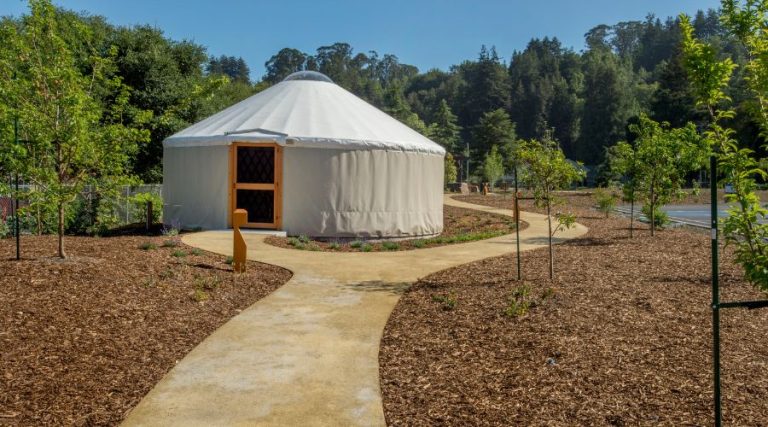How Long Does a Yurt Cover Last: Expert Insights and Maintenance Tips
Yurts have become an increasingly popular alternative to traditional homes, especially for those who are looking for a more affordable, portable, and eco-friendly option. One of the most important aspects of a yurt is its cover, which plays a vital role in protecting the interior from the elements. However, many people wonder how long a yurt cover lasts and what factors can affect its lifespan.
According to Pacific Yurts, a leading manufacturer of yurts in the United States, the average lifespan of a yurt’s fabric covers is 10 to 12 years. This is based on their standard fabric covers, while their premium top cover has a 15-year manufacturer’s material warranty but can typically last for 20 years or more. However, it’s important to note that the lifespan of a yurt cover can vary depending on several factors, such as the climate, the quality of the cover, and how well it’s maintained.
For those who are interested in yurt living, it’s important to understand how long a yurt cover lasts and how to properly care for it. By taking care of the cover and performing regular maintenance, a yurt cover can last much longer than its average lifespan. Additionally, modern yurt manufacturers offer a 15-year warranty on the roof, while the interior wooden structure of the yurt, if made with rot and insect-resistant wood, should last for decades.
Materials and Construction
When it comes to yurts, the materials and construction of the yurt cover play a significant role in determining its lifespan. A yurt cover is typically made of fabric, and the quality of the fabric can vary widely depending on the manufacturer.
Fabric Durability
The durability of the fabric used in a yurt cover is one of the most critical factors in determining its lifespan. Standard fabric covers, such as those used by Pacific Yurts, can last anywhere from 10 to 12 years, while high-end fabric covers can last much longer. Welded seams and Duro-Last fabrics can increase the lifespan of the yurt cover.
Wood Frame and Structure
The wood frame and structure of a yurt also play a crucial role in determining its lifespan. The quality of the wood used in the frame and structure can vary widely depending on the manufacturer. Pacific Yurts uses kiln-dried Douglas Fir for their wooden frames, which is known for its durability. Chestnut wood and wood siding are other popular options for yurt frames.
Roof and Insulation
The roof and insulation of a yurt are also important factors in determining its lifespan. The standard roof used by Pacific Yurts has an R-value of 22, which is suitable for most climates. However, if you plan to use a wood stove to heat your yurt, you may want to consider upgrading to a higher R-value. Acrylic domes and UV web frames can also help increase the lifespan of the yurt roof.
Insect-resistant wood is also an important consideration when it comes to the wooden structure of the yurt. Rainier Yurts, for example, uses only the highest quality materials in their yurt construction, including insect-resistant wood for the frame and structure. This helps to ensure that the yurt will last for many years to come.
Overall, the quality of the materials and construction of a yurt cover play a significant role in determining its lifespan. By choosing a yurt with a durable fabric cover, high-quality wood frame and structure, and a well-insulated roof, you can ensure that your yurt will last for many years to come.
Maintenance and Longevity
Protecting Against Environmental Factors
The lifespan of a yurt cover can be affected by various environmental factors, such as UV exposure, humidity, and snow load. To protect against these factors, it is recommended to apply a UV protectant to the cover and regularly lubricate the door and frame to prevent decay and wear. Additionally, it is important to regularly clear leaves and debris from the roof to prevent damage and ensure efficient water runoff.
Routine Care and Maintenance
Proper maintenance is crucial for ensuring the longevity of a yurt cover. It is recommended to clean the vinyl covers twice a year, or as needed, with a mild soap (such as Ivory soap) and warm water using a soft bristle brush. It is important to avoid using harsh chemicals or abrasive materials that could damage the cover. Additionally, it is recommended to regularly check for any stains, mold, or mildew and address them promptly to prevent further damage.
Manufacturers typically offer a warranty for the roof cover, with an average lifespan of 10 to 12 years, but with proper care and maintenance, the premium top cover can last up to 20 years or more. It is important to keep in mind that the longevity of a yurt cover can also depend on factors such as location, weather conditions, and use of the yurt.
In terms of materials, acrylic and polyurethane-coated fabrics are commonly used for yurt covers due to their durability and resistance to mold and mildew. Proper insulation and a dome shape can also help protect against environmental factors and increase the lifespan of the cover.
In summary, routine care and maintenance are crucial for ensuring the longevity of a yurt cover. Protecting against environmental factors such as UV exposure and snow load, and regularly cleaning and addressing any issues promptly can help increase the lifespan of the cover.
Frequently Asked Questions
What factors affect the longevity of a yurt cover?
The longevity of a yurt cover depends on various factors, including the quality of the materials used, the frequency of use, and the weather conditions it is exposed to. High-quality materials, such as heavy-duty vinyl, can last longer than lower quality materials. However, frequent use and exposure to harsh weather can cause wear and tear, which can reduce the lifespan of the cover.
Can climate impact the durability of yurt materials?
Yes, climate can impact the durability of yurt materials. Extreme temperatures, high winds, and heavy precipitation can cause damage to yurt covers. It is important to choose a yurt cover that is designed to withstand the specific climate conditions of the area where it will be used.
What maintenance is required to extend the life of a yurt?
Proper maintenance can help extend the life of a yurt cover. Regular cleaning and inspection can help identify any issues before they become major problems. It is important to remove debris and snow from the roof and walls to prevent damage. Additionally, applying protective treatments, such as UV-resistant sprays, can help prolong the life of the cover.
What is the expected lifespan of a yurt’s roof and walls?
The lifespan of a yurt’s roof and walls can vary depending on several factors, including the quality of the materials used, the frequency of use, and the weather conditions it is exposed to. On average, a standard fabric cover can last 10-12 years, while a premium top cover can last up to 20 years or more.
How does weather exposure influence yurt fabric degradation?
Weather exposure can cause yurt fabric degradation over time. Sun exposure can cause fading and cracking, while moisture can cause mold and mildew growth. High winds can cause tears or punctures in the fabric. It is important to choose a yurt cover that is designed to withstand the specific weather conditions of the area where it will be used.
Are there any protective treatments to prolong a yurt cover’s life?
Yes, there are protective treatments that can help prolong a yurt cover’s life. UV-resistant sprays can help protect against sun damage, while mold and mildew treatments can help prevent growth. Additionally, applying a waterproofing spray can help protect against moisture damage. It is important to follow the manufacturer’s instructions when using any protective treatments.












